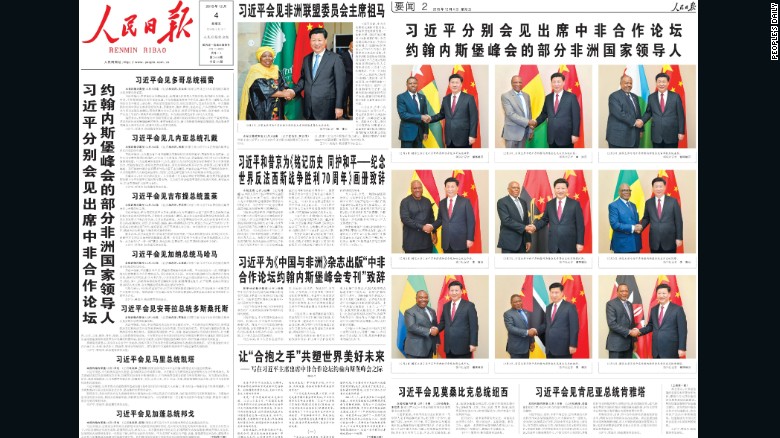Depicting China: Can Chinese photographers scoop more awards?
The work of Chinese photojournalists has often gone unrecognized outside their homeland -- but this is changing, and fast.
Eleven Chinese photographers have been shortlisted for the 2016 Sony World Photography Awards, with seven of those in the professional competition. Chinese entries to the awards have surged 263% from last year. The winners will be announced in London April 21.
And earlier this year, Zhang Lei, a photographer at the Tianjin Daily, won a top prize in the World Press Photo Contest for his image of Tianjin, a city in northern China, shrouded in haze.
Stunning images chronicle China's dramatic changes
"Individual Chinese photographers have started to earn fellowships and awards abroad," says Judy Polumbaum, Professor Emerita of Journalism and Mass Communication at the University of Iowa.
"Photojournalists elsewhere have become aware of their Chinese peers... we are probably seeing the beginning of broader awareness."
The plaudits come despite the Chinese state controlling much of the country's media.
Censors place restrictions on what journalists can and can't report on, and the journalistic environment has become more restrictive since President Xi Jinping took power in 2012, with critical journalists detained and an editor resigning over the crackdown.
However, winners of the World Press Photo awards, which China regards as the "photo Olympics," find themselves lauded and feted on national television and in newspapers.
More wiggle room?
Polumbaum says that Chinese photographers do operate under fewer constraints than their reporter counterparts, and have more wiggle room to tackle sensitive subjects -- at least in their free time.
Photographer documents possessions of Chinese families
The Internet and photo books have become important platforms for photojournalists to pursue edgier work.
"There are far fewer explicit boundaries on book content than on day-to-day press coverage," says Polumbaum.
"Thus, even daily news photographers who are expected to turn out certain types of photos can pursue more critical parallel projects that see publication in books.
"The whole issue of censorship is widely misunderstood abroad, as it is much more subtle than commonly thought, and there are many ways around it."
The photographers shortlisted by the Sony World Photography Awards tackle a variety of subject matter.
Fan Li, an associate professor of Shaanxi Normal University's School of Journalism and Communications, focuses on ethnic minority Tajiks living in China's far western province of Xinjiang; Beijing-based Li Feng, a staff photographer for Getty Images, examines the lives of monkeys bred for animal testing; while photographer Zhe Zhu traced the origins of the Yangtze River.
Chinese newspapers typically feature pictures of leaders and officials rather than ordinary people or striking images of the day's top story. One widely shared People's Daily newspaper from December had 10 pictures of President Xi.

The December 4, 2015 front page of the People's Daily had 10 photos of Xi Jinping
Greater access, awareness
Cheap, easy-to-use digital cameras have made the craft more accessible to amateurs and photography as an art form is also finding an audience in China.
In 2014, more than 25,000 people attended the inaugural Photo Shanghai, the first international art fair dedicated to Asian photography.
"People enjoy photography; they digest it daily. You don't need a course in art history to understand it," said Scott Grey, CEO of the World Photography Organization.
Some of the world's best (and strangest) photographs go on sale
Zhang, the winner of the 2016 World Press Award, sees his win as a sign of increasing recognition for Chinese photographers.
"First of all, Chinese photographers have been improving technically, and more and more are meeting international quality and standards," Zhang told the Global Times.
No soft focus
But the international curiosity about China holds a downside, according to Polumbaum.
"The photographers from China grabbing attention first -- and continuing to get the most attention abroad --- are those who depict some of the grimmest dimensions of Chinese society in the most extreme terms, particularly the 'dark' side of economic development in the form of ecological disaster," she says.
Meet China's 'Annie Leibovitz'
"This certainly is a crucial subject, but it's not the only aspect of Chinese life."
News Courtesy: www.newagebd.net












